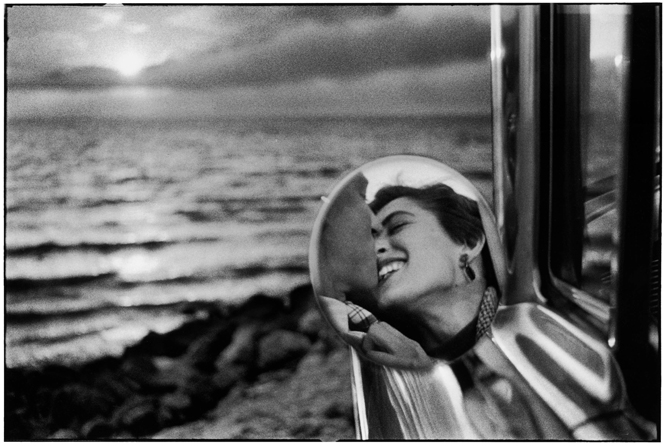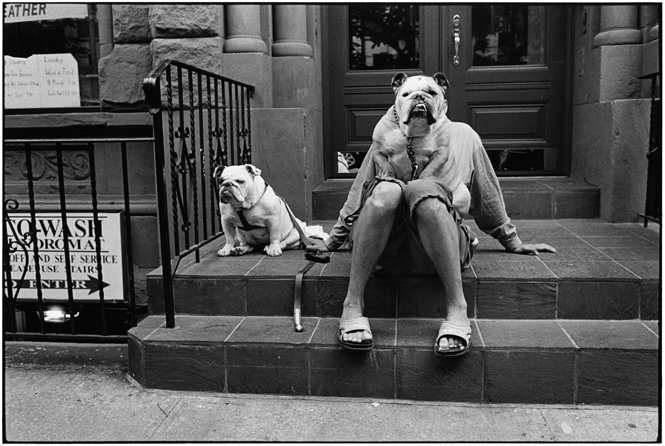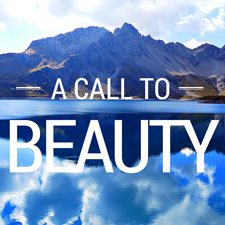In honor of Valentine’s Day, and for all of you, my Valentines, I’m launching a new “Artist of the Week” blog series.
I’ve been thinking about doing something like this for a while now, but it all came together yesterday when I was talking photographers with some friends. I turned to one, a well-established portrait photographer, and said, “You know who Patrick Demarchelier is, don’t you?” She didn’t.
When I later relayed the story to my husband, he said, “I think this is a case of you being so close to something that you don’t realize you know a lot more about it than the average person.” Ok then, it would be my absolute pleasure to share my obsession with art and photography with you, starting with Magnum photographer Elliott Erwitt.
One of my favorite photographic love moments was captured by Erwitt in Malibu, California in 1955:
 California – Malibu Kiss (c)1955 Elliott Erwitt When I think of Erwitt, I first think of this California kiss image but he’s actually much better known for his humorous and absurd take on everyday life and particularly his photos of dogs and their owners. As his official bio says, he “likes children and dogs.”
 New York City (c) 2000 Elliott Erwitt ![New York [Great Dane Legs, Boots & Chihauhau Legs] (c) 1974 Elliott Erwitt](http://katewatson.net/wp-content/uploads/2014/02/Elliott_Erwitt_USA_New_York_1974_Felix_Gladys_and_Rover_01.jpg) New York [Great Dane Legs, Boots & Chihauhau Legs] (c) 1974 Elliott Erwitt  East Hampton New York (c) 1983 Elliott Erwitt But Erwitt also has created some beautiful portraits:
 Marilyn Monroe (c)1956 Elliott Erwitt  New York (c) 1953 Elliott Erwitt  Photographer Elliott Erwitt (c) Brian Smith Born in 1928, Erwitt has been making art from a camera for a long, long time. He started out in the darkroom in high school, processing “signed” prints for celebrities. At just 21 he began his professional career in photography, but was later drafted into the US Army. He had been lucky to meet master photographers, including Edward Steichen and Robert Capa, before his military service and they welcomed him into the Magnum agency afterward. He has been an active member ever since.
He continues his 40+ year career today, working with magazine, advertising and industry clients as well as creating books and exhibitions. His work has hung worldwide, including the Museum of Modern Art in New York, the Smithsonian Institution, the Museum of Modern Art in Paris, the Royal Photographic Society in Bath, and the Museum of Art in New South Wales/Sydney, among many others.
To see more of Erwitt’s work, visit his website: http://www.elliotterwitt.com. To purchase books, prints and more, visit the Magnum Photos store or Peter Fetterman Gallery.
What is your favorite Elliott Erwitt image? What do you think about this new “Artist of the Week” series? Any genre you’re particularly interested in learning more about?
Cheers,

A while back I was chatting with my cousin Mary about her volunteer activities. It was clear from how quickly and completely she became involved that it was a true passion project for her, and so I wanted to share her story with you. Here it is, in her own words:
What is your passion project?
I volunteer with Boston Terrier Rescue of East Tennessee (BTRET), which covers 12 Southeastern states including Florida. I run the Facebook page for the Florida division. I also run online auctions to help raise funds for the rescue. These funds are so important because BTRET is a non-profit. Items are donated by people who want to help out but cannot foster. The money raised goes directly to the rescue to pay for vetting costs which include vaccinations, spay/neuter, medications, and emergency care.
Rescues are huge networks of people who foster, sponsor, transport, and adopt. My rescue is breed specific (not all are), but we take mixes and other non-Boston breeds unlike a lot of breed-specific organizations.

Why do animal rescues matter?
Animal rescues are important because they step in to help animals that would not have a chance otherwise. As the American Humane Association says, “an estimated 3.7 million unwanted pets must be euthanized at animal shelters every year—many because they could not find families to adopt them.”
There are many facets to animal rescue. Dogs that are offered for nominal fees or “free to good home” online are at high risk of being used as bait dogs for fighting. Hoarding and breeder dumping, which is where breeders discard dogs that aren’t reproducing, are another factor. We also do shelter rescues, which include strays and “owner surrenders.” Dogs picked up as strays by animal control have what is called a “stray hold” which varies from 3-7 days depending on the organization to give an owner time to find their lost dog. Sadly when people surrender their dog, they don’t seem to care what happens to it, they just don’t want to deal with it any longer. These dogs are at high risk of being euthanized if not adopted within a few days.
Many young and healthy dogs are adopted at shelters by private citizens but older or medically needy dogs are overlooked and that is one reason why rescue is so important. Many times medically needy or injured dogs just need a chance to get well or need care that shelters cannot provide so we will take them in, get them into a foster home and help them recuperate and eventually get them a forever home.
Shelter dogs are almost always at risk of euthanasia unless they are lucky enough to land in a no-kill shelter which are rare. Shelters euthanize dogs for many reasons, including lack of space to house new animals.
Foster homes are so important. People volunteer to love the dog and provide food and shelter and the rescue pays for vet bills. The foster houses the dog until it is adopted. Fosters are screened and home visits are required.
 Mary on the way home with her newest rescue, Sully How did you get involved?
My friend Renee, who lives in Atlanta, is very involved in BTRET. I adopted Yoshi, who was one of her foster dogs. Yoshi was part of a terrible hoarding case. I never knew a Boston until Yoshi (she’s a mix) but I fell in love with their silly, quirky personalities. They are funny little dogs.
When I learned more about the issues, I wanted to help. One day I saw a free Boston Terrier listed on Craigslist and I went and got him, found him a foster home, and I was hooked.
What do you do?
I rescue dogs from many different situations including shelters, Craigslist, “owner surrenders” and the occasional stray. Many shelters will notify us that they have a dog that needs our help.
I have personally had seven foster dogs at one time or another, and assisted in transporting more than I can count. Transporting is just helping the dog get from one place to another. I have driven as many as 8 hours round trip and as few as 30 minutes.
I have two of my own dogs: Yoshi and Walden, who I adopted recently. I currently have three fosters: Murphy, Petunia, and Sully. Two of my past fosters, Pippa and Lilly, were adopted by friends.
There is a coordinator for every state our rescue covers and that person is the liaison between the shelter and the volunteer who picks up the dog from the shelter. Some months there are so many dogs that need help it’s overwhelming and other months it’s quiet. Sadly, due to overbreeding and the “I only want a puppy” syndrome, it will never end until the laws are changed and puppy mills are shut down, but that’s a whole different can of worms…
How would someone else get involved in animal rescue? How do you find one?
People can get involved in many different ways: fostering, adopting from a rescue or shelter instead of buying from a pet store, transporting, donating, and sponsoring.
Those who wish to find a rescue can easily find one online by using a search engine. I would just caution that they research the rescue and make sure they are a non-profit.
Why is this a passion project for you?
This is the best thing I’ve ever done by a landslide. I adore helping these dogs so much because some of them have been so mistreated and abused but they still trust humans miraculously and I can see the love and gratitude in their sweet eyes. The fulfillment I get from them is beyond measure and they give me more than I could ever give them.
 Mary and Yoshi (right), with friend Tammy and Lilly To learn more about Boston Terrier Rescue of Eastern Tennessee, visit their website: www.bostonterriertn.org. Donations can be made online. If you would like to get involved with BTRET, you can contact Mary here.
Do you have a passion project? I’d love to know more.
Cheers,

When it comes to small business, I’m not a fan of written business plans. Here’s why:
-
Writing a business plan is an incredibly laborious, time-consuming process that distracts you from the real work of building a business and no one—not even you—will ever read it.
-
It’s outdated as soon as you finish it.
-
It’s built on assumptions—which are of course unproven until you test them.
-
It’s full of projections based on those assumptions—which are thus meaningless.
-
Potential funders will ignore the projections—unless you’ve got proven traction already.
And to put the last nail in the coffin, in a study of more than 100 ventures, researchers concluded there was “no difference between the performance of new businesses launched with or without a written business plan.” A written plan becomes even more unreasonable when there’s no indication that it provides any real benefit to business performance.
 Photo licensed and adapted from tallahassee “In preparing for battle I have always found that plans are useless, but planning is indispensable.” ― Dwight D. Eisenhower
If you need external funding, you’ll need something to make your case, however. Develop a pitch deck. If you’re going it alone on your own dime, skip the business plan and get down to business. How do you do that?
Strategize. Test. Iterate. This is sufficient for most small business owners.
Strategize – Determine what your goals are and how you will achieve them.
Test – Try out your strategies and notice how well they’re working. Look for opportunities to prove your strategies wrong so that you can fail fast and get on to the next, better solution ASAP.
Iterate – Adapt your strategies accordingly, and then get back to the real work of owning a business.
Remember, as LinkedIn founder Reid Hoffman said: “The entrepreneurial journey starts with jumping off a cliff and assembling an airplane on the way down.”
Enjoy the ride,

I’ve been feeling fairly judgmental since returning from India. And I’m wondering if one of the reasons—in addition to dealing with jetlag and reassimilating into my old life—is that I often felt judged in Bangalore.
Staring is common throughout India (as noted by GirlUnstoppable, Full Stop India and others), and I experienced my fair share. Most days, I ignored it. Other days, particularly when young men scrutinized me from head to toe for minutes at a time, I began to consider the merits of donning a burqa. For an American woman who does not generally seek male attention—I’m happily married, after all—it was an unusual sensation.
My husband had a far more negative response to it. While I joked about it, he was horrified on my behalf and kept asking what we should do when we went out: Stare back? Say something? I told him to ignore it, but I did consider amusing alternatives like snapping photos for a wall of shame.
I’m familiar with attracting attention while traveling. In Ghana, little kids followed me around and called me obruni; adults were often friendly and curious. In Kochi, India, where we spent Christmas, children and young adults whispered amongst themselves when they saw us and yelled, “Hello,” after we passed by. Almost everywhere we’ve been in the developing world, my husband Brian—who’s 6’4″—gets loads of attention.
In Bangalore the interactions felt different. There, I alone was the recipient of long, hard stares while Brian was virtually ignored. And I’m thankful it was just stares, given others’ experiences. But I walked away from each encounter feeling like I was being judged, treated as not quite human, or as Sarah Elizabeth Webb suggests, was part of a human zoo.
 Photo licensed and adapted from Eric Parker, who says he was fascinated by women wearing burqas in India, as I was. My reason? They often had colorful pants or shoes underneath, hinting at colorful and confident personalities. My experiences in India remind me of an interview I watched between Jonathan Fields and Pamela Slim, author of Escape from Cubicle Nation and a new book called Body of Work. Jonathan shared a personal story about a friend who had been born into an upper middle class family and, throughout his life, struggled with substance abuse, had bouts of homelessness, and ultimately died of an overdose. Jonathan acknowledged that he had looked down at homeless people in the past until he realized, “Who am I to judge?”
Yep.
Although I have a lot of opinions about life, I generally try to live and let live; that is I try to avoid imposing my views on others. It’s not always easy—and I acknowledge that by writing this post, I’m effectively judging the men who stared at me. (Didn’t I already tell you I was judging others lately?) But that is not my intention and I certainly don’t want to suggest anything universally negative about Indian men or men in general. This post is about how I feel now and felt then, and how I choose to think and behave instead.
I strive to cultivate acceptance, compassion and non-judgment because a world where we judge others and relegate entire categories of people to villainy is not one in which I choose to live.
Sure, we all have quick gut-level responses and thoughts, which are based on experiences and upbringing but, if we step back from those initial impressions and try to look from another perspective, I think we can learn a lot about ourselves and humankind. There’s also a difference between acknowledging someone’s actions and making assumptions or judgments about someone based on his/her appearance, culture, religion, ethnicity, viewpoints, circumstances, or even actions.
As Pam Slim said in the interview:
“There’s no difference at all between any human being that is here on earth. Nobody is higher or lower than another.”
Thank you, Pam, I couldn’t agree more.
And while I acknowledge that I’ve been feeling more judgmental than usual right now, I’m going to take a step back and cultivate more acceptance and compassion for myself—so that I may better apply acceptance, compassion, and non-judgment to others.
Is there anyone or anything you’ve judged lately that you would look at from another perspective now? I’d love to know.
Cheers,

“I waited a long time, an hour or two, to make that picture perfect. But I wasn’t totally satisfied. Then, when I’d finished the shoot, they were about to leave and they suddenly hugged in front of a radiator. I took my camera and that was the picture that ran everywhere — it was spontaneous emotion … you could see they were completely in love.” – Mario Testino, as told to The Telegraph
 (c)2010 Mario Testino I was happy to see that fashion photographer Mario Testino finally told the story (right) behind Kate and William’s royal engagement photo or, as I like to call it, the snapshot seen round the world. When I saw the official portrait way back in 2010, my first thought was, “Couldn’t he do better than that?!”
Sure, it’s a cute snapshot (left) but, from a technical perspective, it’s a mess. First, it’s blurry. Also, it’s pixelated. It looks like the capture was underexposed due to the backlit situation.
If you know Testino’s work, you’ll know this is not his best. Part of me is surprised he offered this image to the royal couple at all. If it had been mine, I’d have been horrified to share it with the world.
But, then again, this is the same guy known for a stunning portrait of…Princess Diana’s arm. (Sorry, but that’s where my eye goes because that’s what is in focus!)
 Diana, Princess of Wales – (c)1997 Mario Testino Having been a working photographer, I can’t help but be frustrated by the technical quality of Testino’s royal engagement photo. You know I’m all for casual portraits—that’s totally my style—but what I have to wonder is if having such a poor quality engagement photo of the royal couple distributed worldwide devalues photography overall.
IMHO, it does.
It also makes me wonder if people can tell a quality image from crap anymore? And do they care? I know I care, but am I the only one?
Sometimes I feel that we’re so awash in grainy paparazzi photos of celebs and camera phone selfies that we’ve forgotten the value of quality photography.
And another question I have is: What did Kate and William want from their engagement portrait? I know they wanted to hire Mario Testino to make it; that is not in question. But did they want something formal and directed—Testino’s style—or did they really want something a bit more relaxed and approachable, like the first released image of Prince George taken by Kate’s father (below)? Maybe they needed both: the formal portrait for posterity and the relaxed portrait for themselves?
 (c)2013 Michael Middleton, the royal father-in-law We’ll probably never know, but it is critical for you to understand who you’re hiring when you select a photographer, whether for your wedding, engagement, family, head shots, or newborn photos. Get to know their work, preferably an entire session or close to, before you decide whether they’re a fit for you or not. Read behind the lines of the words they use—photojournalist, documentarian, classic—and see if what your eye sees matches what you envision.
And if you need two different styles of photography, maybe you want to hire two different photographers or have two different sessions, each one with a different objective.
What do you think: Do we know what quality photography is anymore? And do we care?
Cheers,

|


![New York [Great Dane Legs, Boots & Chihauhau Legs] (c) 1974 Elliott Erwitt](http://katewatson.net/wp-content/uploads/2014/02/Elliott_Erwitt_USA_New_York_1974_Felix_Gladys_and_Rover_01.jpg)






















Artist of the Week: Brian Smith » KateWatson.net - […] came to mind as my next Artist of the Week when I used his portrait of Elliott Erwitt in week one. Don’t you love […]
Artist of the Week: Patrick Demarchelier » KateWatson.net - […] mentioning him in last week’s inaugural Artist of the Week post, it seems only fair to choose French fashion photographer Patrick Demarchelier as this week’s […]